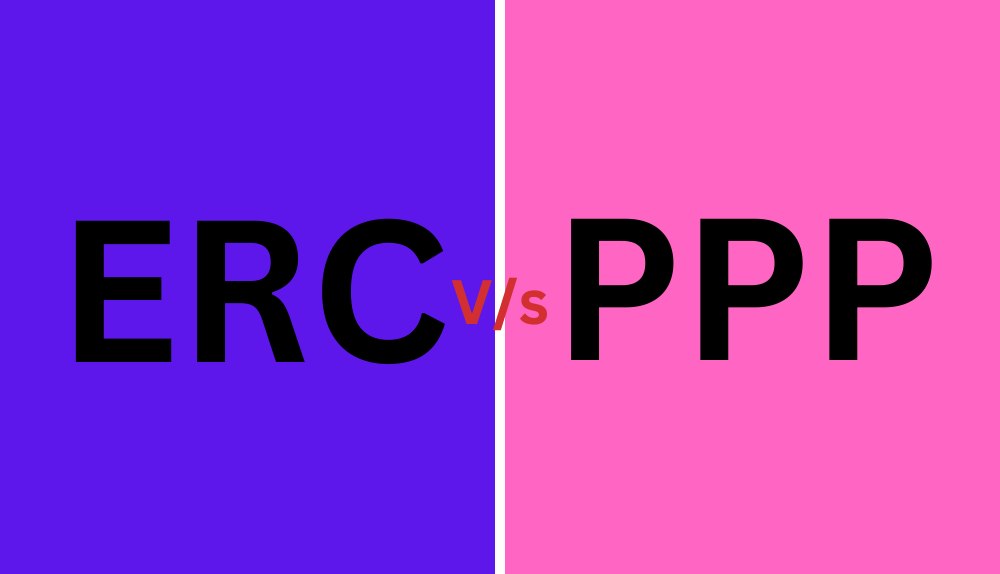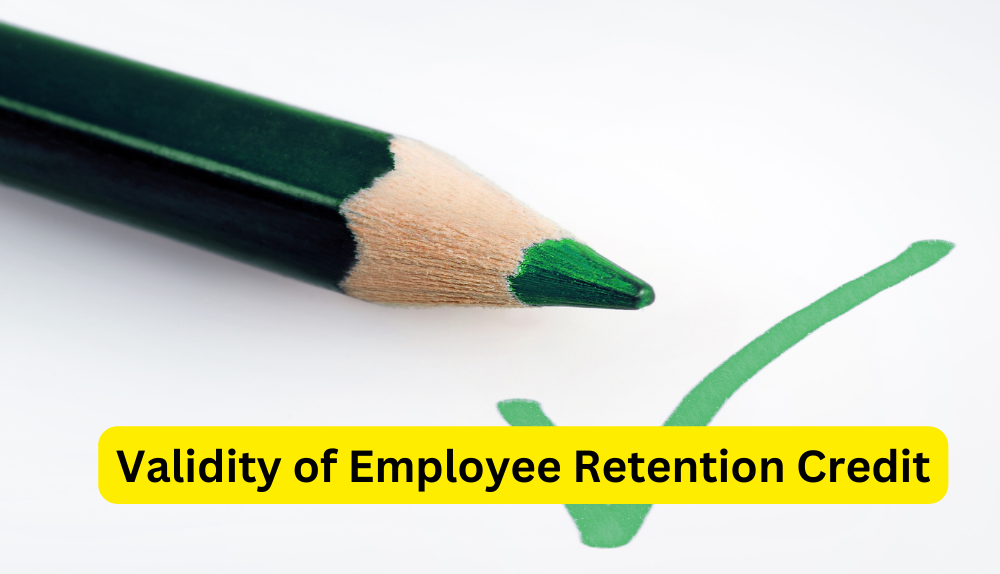In the midst of a lot of confusing information out there, it’s essential to know what’s genuine and what’s not. One thing that’s real and can be helpful is the Employee Retention Credit (ERC). Employee Retention Credit is a special kind of tax credit that the United States government introduced through the CARES Act during the COVID-19 pandemic. This credit is intended to encourage firms to continue paying their employees even in trying circumstances. But with so much talk about scams and fake offers, it’s natural to wonder if the Employee Retention Credit is real. Let’s explore this credit together and find out the truth behind it. Get ready to discover what the ERC is all about!
Understanding the Employee Retention Credit
The Employee Retention Credit is an important tax benefit created by the US government to help businesses during the COVID-19 pandemic. Its main goal is to encourage businesses to retain their employees and continue paying them, even if times are tough.
The ERC works like this: eligible businesses can claim the credit on their payroll taxes. If the credit amount is more than what they owe in taxes, they can get a refund for the extra money. This can be really helpful for businesses struggling with their finances.
To qualify for the ERC, businesses must meet certain conditions, like having a big drop in their earnings or being forced to close because of COVID-19 restrictions. The credit amount is based on the wages they pay to eligible employees and can be a percentage of those wages.
Understanding the ERC is crucial for businesses to get the financial support they need during these difficult times. Employers should talk to tax experts or check the official IRS website to ensure they qualify and can take advantage of this valuable credit.
Difference Between ERC and PPP
The ERC and the PPP are two types of help for businesses during the COVID-19 pandemic, but they work differently.

The main difference is how they give assistance. The ERC is like a special tax credit employers can get if they keep their employees on the payroll during tough times. It helps reduce the amount of taxes the business owes, and if the credit is more than the taxes, the business can get a refund for the extra money.
On the other hand, the PPP is like a loan that small businesses can apply for to cover important expenses like paying employees and rent. If the business spends the money on the right things, like payroll and utilities, the loan can be forgiven, which means the business doesn’t have to pay it back.
The rules for who can get help are also different. The ERC is available to all types of businesses, big or small if they experienced a big drop in income or were forced to close due to COVID-19. But the PPP is mostly for small businesses with fewer than 500 employees, although there are some exceptions.
Another thing to know is that businesses can’t use both the ERC and PPP at the same time for the same things. If they got a PPP loan, they can’t get the ERC for the same payroll expenses covered by the loan.
In short, the ERC is a tax credit to encourage keeping employees, while the PPP is a loan to help with specific expenses. Businesses need to understand these differences to make the best decisions for their needs. Talking to experts or advisors can be helpful in figuring out which program is right for them.
Common Misconceptions about the ERC
ERC has been a source of much-needed financial support for businesses during the COVID-19 pandemic. However, there are several misconceptions surrounding this tax credit that can lead to confusion and missed opportunities. Let’s explore some of the most common misconceptions about the ERC.

ERC and PPP are Mutually Exclusive
One prevailing misconception is that businesses cannot claim both the ERC and the Paycheck Protection Program (PPP) for the same payroll expenses. In reality, while businesses cannot “double-dip” and claim both credits for the same wages, they may be eligible for both programs for different time periods or specific expenses. Careful consideration of eligibility requirements and proper planning can help businesses maximize the benefits of both the ERC and PPP.
ERC is Only for Businesses Impacted by Full Shutdowns
Another misconception is that the ERC is exclusively available to businesses that have experienced complete shutdowns due to government mandates. Actually, even if they did not completely close, firms that have had a large reduction in gross receipts may still be eligible for the credit. Understanding the various criteria for eligibility can help businesses determine their qualification for the ERC.
ERC is Only for Large Corporations
Some businesses may believe that the ERC is only accessible to large corporations, but this is not the case. The credit is available to businesses of all sizes, including small and medium-sized enterprises. The main criterion is experiencing a decline in revenue or facing government restrictions, making the credit applicable to a broad range of businesses.
ERC is Not Retroactive
A common misconception is that the ERC is only applicable to future wages paid after its enactment. However, the ERC was initially available retroactively to eligible wages paid as early as March 2020. The extension of the ERC also allowed businesses to claim credit for eligible wages in later periods.
ERC is Too Complex to Claim
Some businesses might assume that claiming the ERC is too complex and burdensome. While the credit does involve specific calculations and documentation, seeking assistance from tax professionals or using reliable payroll software can simplify the process and ensure accurate claims.
Validity of Employee Retention Credit
When it comes to helping businesses deal with the difficulties brought on by the COVID-19 pandemic, the ERC has proven to be a lifeline. However, some people could doubt its legitimacy and ask if it’s a real chance for financial relief. Let’s examine the Employee Retention Credit’s legitimacy in light of the official data provided by the Internal Revenue Service (IRS) in order to address any concerns.

IRS Guidance on the ERC
The IRS, as the primary authority on tax matters in the United States, has been at the forefront of providing guidance and information regarding the ERC. Through various channels, such as statements, Frequently Asked Questions (FAQs), and public notices, the IRS has shed light on the complexities of this tax credit.
Official Recognition of the Employee Retention Credit
The ERC is an authorized tax break according to the IRS. The Coronavirus Aid, Relief, and Economic Security (CARES) Act, a significant piece of legislation adopted by the U.S. government to offer financial assistance during the pandemic, is responsible for the creation of this credit. The ERC is a legal and valid employer assistance program because the CARES Act specifies the terms and conditions for it.
Guidance on Eligibility and Qualification
The IRS has provided detailed guidance on the eligibility criteria for businesses to qualify for the ERC. Businesses must have seen a substantial drop in gross receipts or been forced to close down by the government as a result of the COVID-19 outbreak in order to qualify. The IRS has provided clarity on how firms might calculate their qualifying revenue losses and have established clear criteria for evaluating this decline.
Clarification on Credit Calculation and Claiming
To ensure businesses understand the potential benefits of the Employee Retention Credit, the IRS has provided explicit guidance on how to calculate the credit amount and claim it. The maximum credit amounts that firms can claim have been specified by the IRS and the credit can be calculated based on eligible wages provided to qualified employees during defined periods. The IRS has also made it clear that companies can claim the credit on their employment tax returns and get a refund if the credit is more than their tax obligation.
Consistency in Public Notices and Updates
The IRS has consistently issued public notices and updates regarding the ERC to keep businesses informed about any changes, extensions, or modifications. This level of transparency reinforces the credibility of the credit and demonstrates the government’s commitment to providing accurate and up-to-date information to those who can benefit from it.
Overall, the ERC is indeed a valid and legitimate tax credit authorized by the CARES Act and supported by the IRS. The numerous statements, FAQs, and public notices issued by the IRS confirm its legitimacy and underscore the government’s effort to help businesses retain their employees during these challenging times. Businesses can confidently explore the benefits of the ERC and use it as a valuable tool to navigate the economic impact of the COVID-19 pandemic. As always, it is recommended to consult with professionals or seek guidance from the IRS directly to ensure compliance and maximize the advantages of this credit.
Final Words
In conclusion, the Employee Retention Credit (ERC) stands as a genuine and authorized tax credit designed to aid businesses during the COVID-19 pandemic. Supported by the IRS through official statements and guidance, the ERC offers much-needed financial relief to employers aiming to retain their workforce. Despite common misconceptions, businesses should recognize that the ERC and PPP can be utilized strategically to maximize benefits while eligibility criteria cater to businesses of all sizes and experiences. With the proper understanding of the ERC’s provisions and compliance with guidelines, businesses can confidently navigate through these challenging times, utilizing credit as a valuable tool to sustain their operations and support their employees.
Frequently Asked Questions (FAQs)
Can I claim both the ERC and the PPP?
While businesses cannot claim both credits for the same wages, they may be eligible for both the ERC and PPP for different time periods or specific expenses. Understanding criteria for eligibility on each program is crucial to determine the most beneficial approach.
Who is eligible for the ERC?
A number of conditions must be met in order to qualify for the ERC, such as having gross receipts significantly drop or being subject to pandemic-related government shutdowns. All sizes of businesses, including nonprofits, may qualify for the credit.
How to claim the ERC?
On the employment tax forms, such as Form 941, Employer’s Quarterly Federal Tax Return, eligible employers can claim the ERC. Businesses may get a refund for the difference if the credit is more than the amount of tax they owe.
Can I claim the ERC for previously claimed PPP expenses?
No, businesses cannot “double-dip” and claim both the ERC and PPP for the same payroll expenses. However, they may use the ERC for the wages that weren’t covered by the PPP loan or during periods not covered by the PPP.
Is the ERC applicable to self-employed individuals?
Yes, depending on their qualified self-employment income, sole proprietors and single-member LLCs that are self-employed may also qualify for the Employee Retention Credit.
